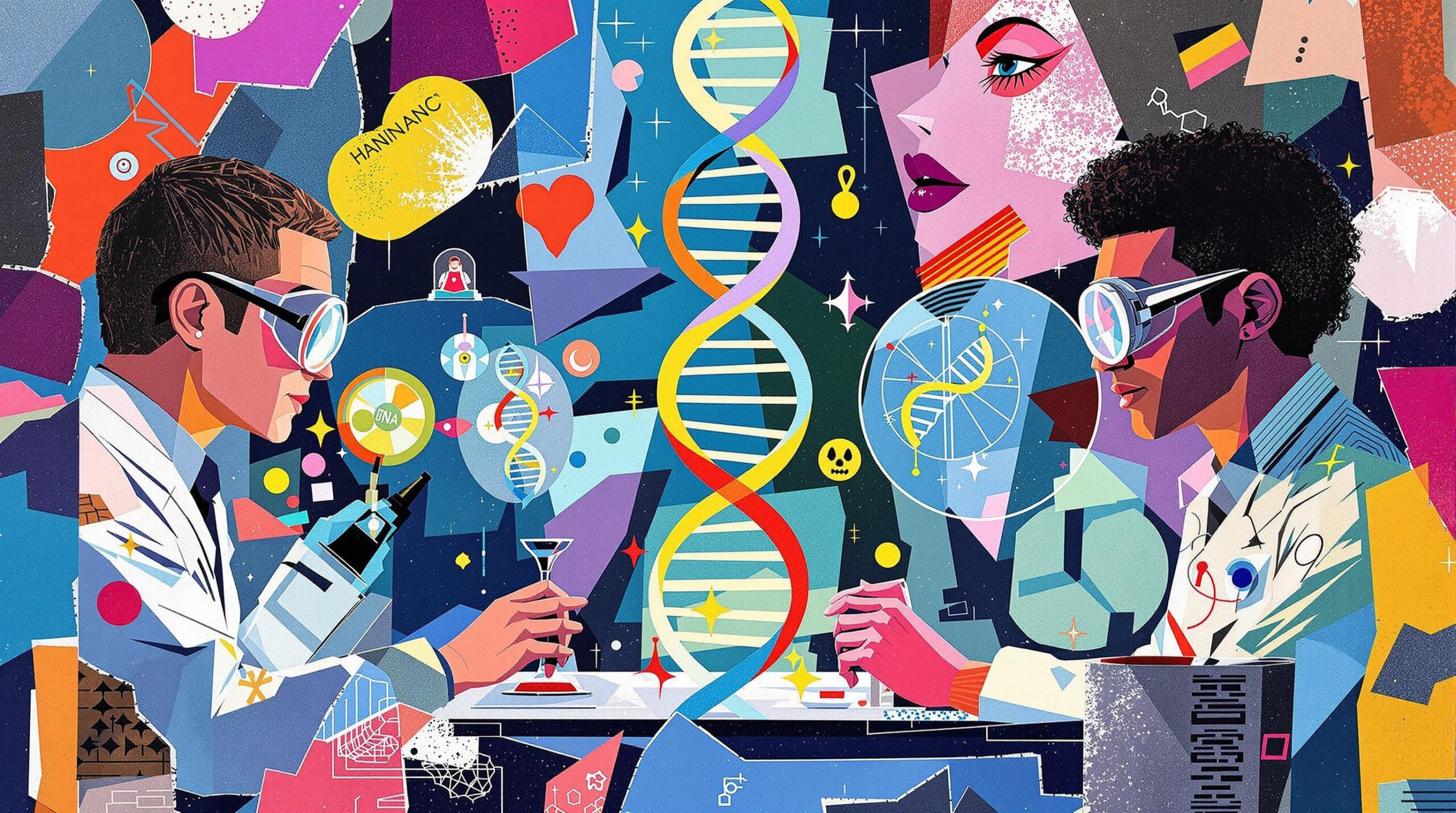Understanding Epigenetic Clocks: The Science of Biological Age
What are Epigenetic Clocks?
Epigenetic clocks are sophisticated biological tools that measure your real age – not the years since your birth, but how old your body actually is. Think of them as high-tech body timekeepers that read chemical changes in your DNA. These changes, called DNA methylation, happen naturally as we age, leaving measurable marks on our genetic code.
The Science Behind DNA Methylation
DNA methylation occurs when small chemical tags attach to our DNA, affecting how genes are switched on or off. It’s like a molecular timekeeper, recording the wear and tear our bodies experience. Scientists have identified specific patterns in these changes that correlate strongly with aging. The first breakthrough came from Dr. Steve Horvath in 2013, who developed an epigenetic clock that could predict age with remarkable accuracy.
Types of Epigenetic Clocks
Several clocks now exist, each with its own focus. The Horvath Clock, considered the gold standard, measures multiple tissue types. The Hannum Clock specializes in blood samples. The GrimAge Clock, perhaps the most practical, predicts mortality risk. The PhenoAge Clock factors in clinical blood chemistry. Each offers unique insights into how we age.
Accuracy and Reliability
Modern epigenetic clocks can predict chronological age within 2-4 years. More importantly, they can spot when your biological age outpaces your calendar age – a red flag for health problems. The precision of these tools has improved dramatically since their introduction, with new versions incorporating machine learning for better accuracy.

The Current Landscape of Biological Age Testing
Several companies now offer epigenetic testing directly to consumers. These tests typically require a small blood sample or cheek swab. Prices range from $300 to $5,000, depending on the comprehensiveness of the analysis. Leading providers include companies like TruDiagnostic, Elysium Health, and MyDNAge.
What These Tests Measure
Modern epigenetic tests examine hundreds of thousands of sites in your DNA. They analyze patterns of methylation that correlate with aging and disease risk. Beyond just biological age, many tests now provide insights into immune system health, inflammation levels, and even cognitive function markers.
Interpreting Results
Test results typically show your biological age compared to your chronological age. A biological age lower than your actual age suggests you’re aging well. The difference between these numbers – called biological age acceleration – is crucial. A five-year acceleration might indicate need for lifestyle changes.
Applications and Implications of Epigenetic Testing
Medical Applications
Healthcare providers use epigenetic clocks to assess disease risk and treatment effectiveness. They’re particularly valuable in studying age-related conditions like cardiovascular disease, cancer, and neurodegeneration. Some clinics now incorporate these tests into preventive care programs.
Research Applications
Scientists use epigenetic clocks to study aging interventions. Recent research has shown that lifestyle changes can actually reverse biological age. A groundbreaking 2019 study demonstrated a biological age reduction of 2.5 years through targeted interventions including diet, sleep, and exercise.
Limitations and Challenges
Current limitations include cost, accessibility, and standardization across different labs. Questions remain about how quickly biological age changes with interventions. Some researchers argue we need longer-term studies to fully validate these tools as predictors of health outcomes.
Factors Influencing Biological Age
Research shows several key factors affect biological aging:
- Diet quality and caloric intake
- Physical activity levels
- Sleep duration and quality
- Stress management
- Environmental exposures
- Social connections
- Alcohol consumption
- Smoking status
Environmental Factors
Environmental influences play a significant role in epigenetic aging. Air pollution, toxic exposures, and even social stress can accelerate biological aging. Studies show that living in areas with high pollution can add 1-2 years to biological age.
Genetic Considerations
While we can’t change our genes, evidence suggests that lifestyle choices can influence how genes express themselves through epigenetic modifications. This interaction between genes and environment offers hope for personal control over aging rate.
Strategies for Optimizing Biological Age
Diet and Nutrition
Research-backed dietary approaches for reducing biological age include:
- Mediterranean diet patterns
- Regular consumption of polyphenol-rich foods
- Adequate protein intake (1-1.6g/kg body weight)
- Time-restricted eating
- Minimizing processed foods
- Maintaining proper hydration
Exercise and Physical Activity
Physical activity significantly impacts biological age. Studies show optimal results with:
- 150 minutes weekly moderate cardio
- 2-3 resistance training sessions weekly
- Regular movement throughout the day
- High-Intensity Interval Training (HIIT)
- Balance and flexibility work
Sleep and Recovery
Quality sleep directly affects DNA methylation patterns. Essential components include:
- 7-9 hours nightly sleep
- Consistent sleep schedule
- Dark, cool sleeping environment
- Limited screen time before bed
- Stress management techniques
Future Developments in Epigenetic Testing
Emerging Technologies
New developments are making epigenetic testing more accessible and informative. Machine learning algorithms improve accuracy. Companies are developing at-home testing kits. Some researchers work on continuous monitoring systems that could track biological age changes in real-time.
Research Directions
Current research focuses on several promising areas:
- Development of tissue-specific clocks
- Integration with other biological markers
- Personalized intervention strategies
- Understanding reversibility of aging markers
- Role of epigenetics in disease prevention
Practical Recommendations for Biological Age Testing
- Choose accredited testing providers
- Test at regular intervals (yearly recommended)
- Compare results across time rather than single measurements
- Work with healthcare providers to interpret results
- Use results to guide lifestyle modifications
- Consider cost-benefit ratio of different testing options
- Keep detailed records of lifestyle changes and results
- Share data with healthcare team
The Future of Aging Assessment
Epigenetic clocks represent a significant advance in understanding human aging. As technology improves and costs decrease, these tools will become standard in preventive healthcare. Their ability to measure biological age with precision offers unprecedented opportunities for personalized health optimization.
The science of epigenetic testing continues to evolve rapidly. These tools provide valuable insights into how lifestyle choices affect aging at the molecular level. By understanding and monitoring biological age, we can make informed decisions about health interventions and potentially slow or reverse aspects of aging. The key lies in regular testing, consistent healthy habits, and working with healthcare providers to interpret and act on results.



